Phone:
+1 252 794 3642
Location:
305 S King St
Windsor, NC 27983
REFORESTATION
WHAT IS REFORESTATION? Reforestation is the establishment of a new timber crop and is just one step in the management of woodsland which is suitable for pine production. Reforestation of pine generally involves the following four phases: (1) Clearcut harvesting -- All merchantable timber is removed from the area to reforest. (2) Site Preparation -- The ground is prepared for the crop of trees. Since pine cannot tolerate growth competition in its early life, it is necessary to control all competing vegetation with fire, herbicides, or heavy equipment, or a combination of any of these. (3) Planting -- New trees may be established by machine planting or hand planting, depending on soil conditions and site preparation. (4) Protection -- The newly established pine stand must be protected from fire, insects and trespass, and should be inspected periodically.
IS IT NECESSARY TO CLEARCUT? Timberlands can handle any timber sale as the owner directs. There are generally only three ways to consider harvesting timber: selective cuts, thinnings and clearcuts. Selective cuts are executed when there will be enough trees of desirable species remaining after all the defective and mature trees have been removed. Thinnings are conducted when there are too many trees per acre; tree removal allows increased growth and health for the remaining stand. Most woodsland at a suitable age for harvest falls into the clearcut category. Clearcutting is essential for the regeneration of loblolly pine.
|
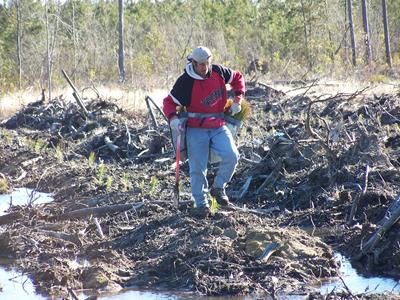

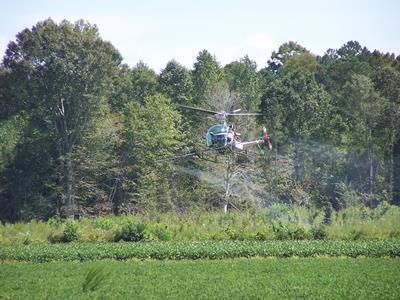
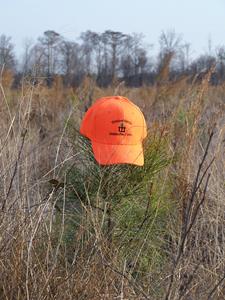
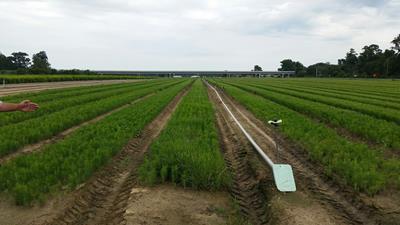
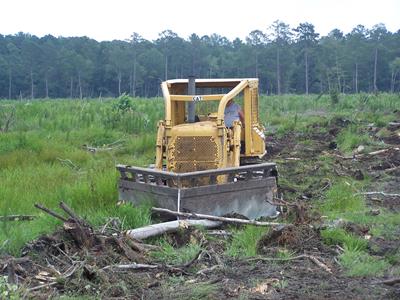
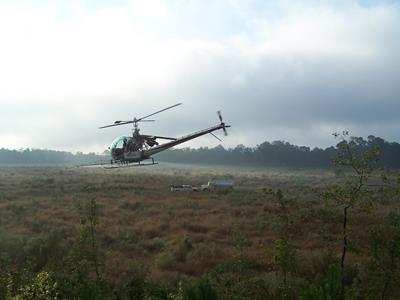
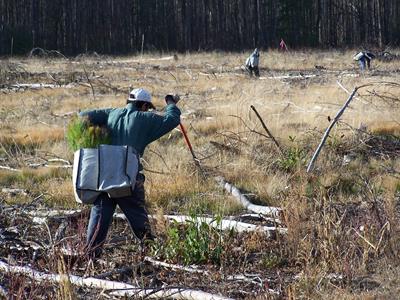
|
Much of the woodland in this area falls into one of the following categories: (1) Excellent pine land that has been “picked at” over the years. As trees have become mature, they were harvested. The remaining stand consists primarily of hardwood and pine that sometimes lacks in quality. Clearcutting is the only way to prepare unproductive pine woodland for reforestation to pine. Sound forestry practice does not believe that clearcutting should be done in lowland areas or other areas not best suited for the production of pine timber.
WHY CAN’T I GROW HARDWOOD? ISN’T IT AS GOOD AS PINE? You can grow hardwood on your land, but it will not yield you or your heirs nearly the money-value as pine. Pine prices are generally greater than hardwood, and pine grows nearly twice as fast as highland hardwood. It is apparent that pine is a better economic choice on land that is well suited to pine production in this geographical area. The lowland areas where pine does not naturally grow, however, should be managed for hardwood production.
WHY SHOULD I REFOREST? IS IT THE LAW? No current law in North Carolina requires you to reforest. However, there are two basic reasons why you should reforest. 1) You may pay taxes on your land and treat it as you wish, but you are only holding it in trust for your lifetime or for as long as you own it. Along with this trust goes certain moral obligations of good management. The usefulness of this land to current and future generations is determined by your decision to continue producing a renewable natural resource -- timber. 2) It is simply good business sense to reforest if there is no other way to keep your woodsland in a high productive state. Every study indicates that the demand for wood products will continue to exceed supply. The future of the timber market appears good, and dollar yields on investments are projected to remain over inflation and real growth rates. Some tax benefits result from reforestation also.
WHAT DOES REFORESTATION COST? Reforestation costs vary with each tract based on the treatment performed. Reforestation prescriptions are based on many factors which include (but are not limited to) type and time of harvest, ground conditions, soils and landowner objectives. In 2022, we currently estimate the following treatment costs: KG/Pile -- $250-$300/acre, V-Shear -- $180-$220/acre, Bedding -- $80-$120/acre, Herbicide Site Preparation -- $70-$90/acre, Herbicide Release -- $60-$80/acre, Burning $30-$50/acre, Root Rake -- $160-$180/acre, Tree Planting -- $100-$175/acre depending on seedling type (generation, spacing and bareroot or containerized). Each reforestation prescription can only be determined after the harvest has been completed, and may or may not include any of the practices listed above. Government incentive programs exist which may pay a portion of these costs to the landowner in a cash grant based off of a percentage of the total cost. These grants are normally subject to the North Carolina Forest Service approval and availability of funds.
WHEN SHOULD REFORESTATION OCCUR? Reforestation plans should be made at the same time that timber harvesting plans are made, and some of your timber income should be set aside and designated for reforestation. Reforestation should begin as soon as possible after timber harvest. Applications for incentive assistance should be made immediately after harvest, to facilitate plan approval by the governmental agencies. Site preparation work should usually be done in mid-summer to fall, and planting should occur in January through March. Herbicide release work is usually done in the August through October time period following planting.
SHOULD ALL OF MY LAND BE REFORESTED? Not necessarily! Reforestation is always a consideration on areas that have been clearcut, but you may decide to reserve a portion of your land for wildlife or recreational management. Reforestation plans should be developed to suit landowner objectives.
CAN TIMBERLANDS HELP ME WITH REFORESTATION? Timberlands Unlimited will assist landowners in all aspects of woodland management, making sound forest management recommendations. As professional foresters and as managers of an extremely valuable resource, we have obligations to maximize short and long term income through maximum timber production for the owners as well as to maximize the use management of land for future generations. We can make a reforestation plan for you, apply for governmental funding, contract services, and supervise and implement your individual plan. Reforestation is always a landowner decision, and we stand ready to assist you as you desire! |
|
